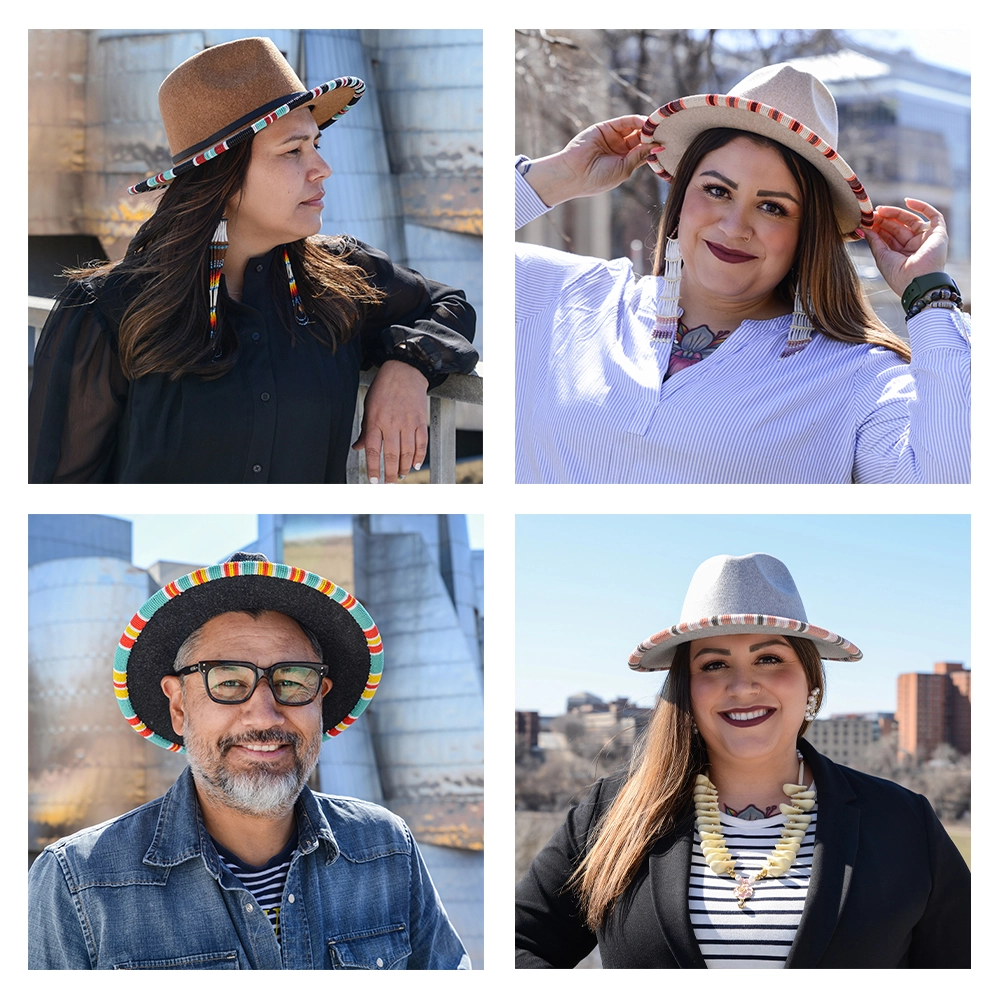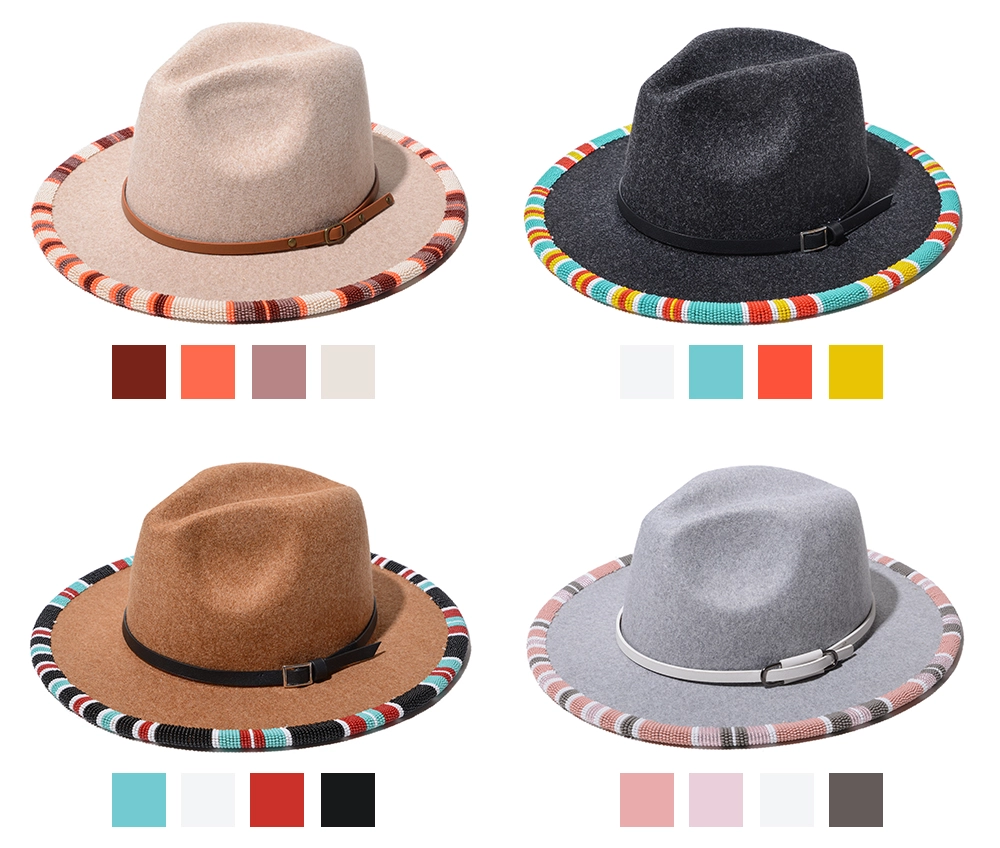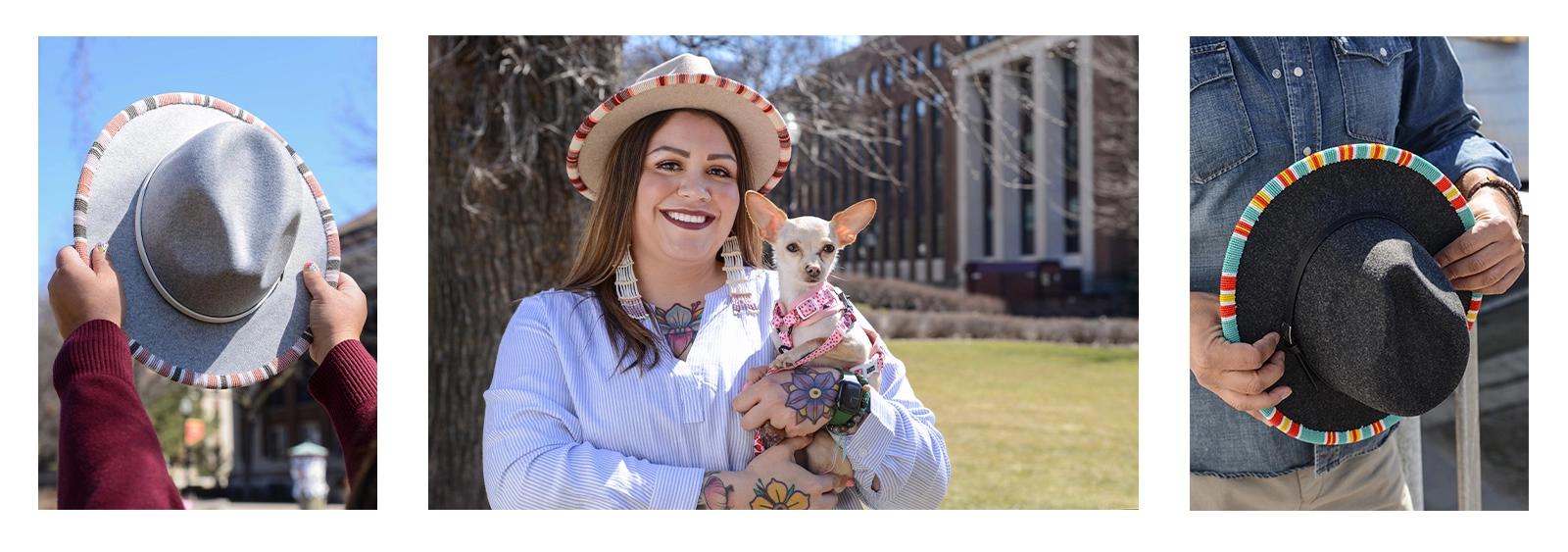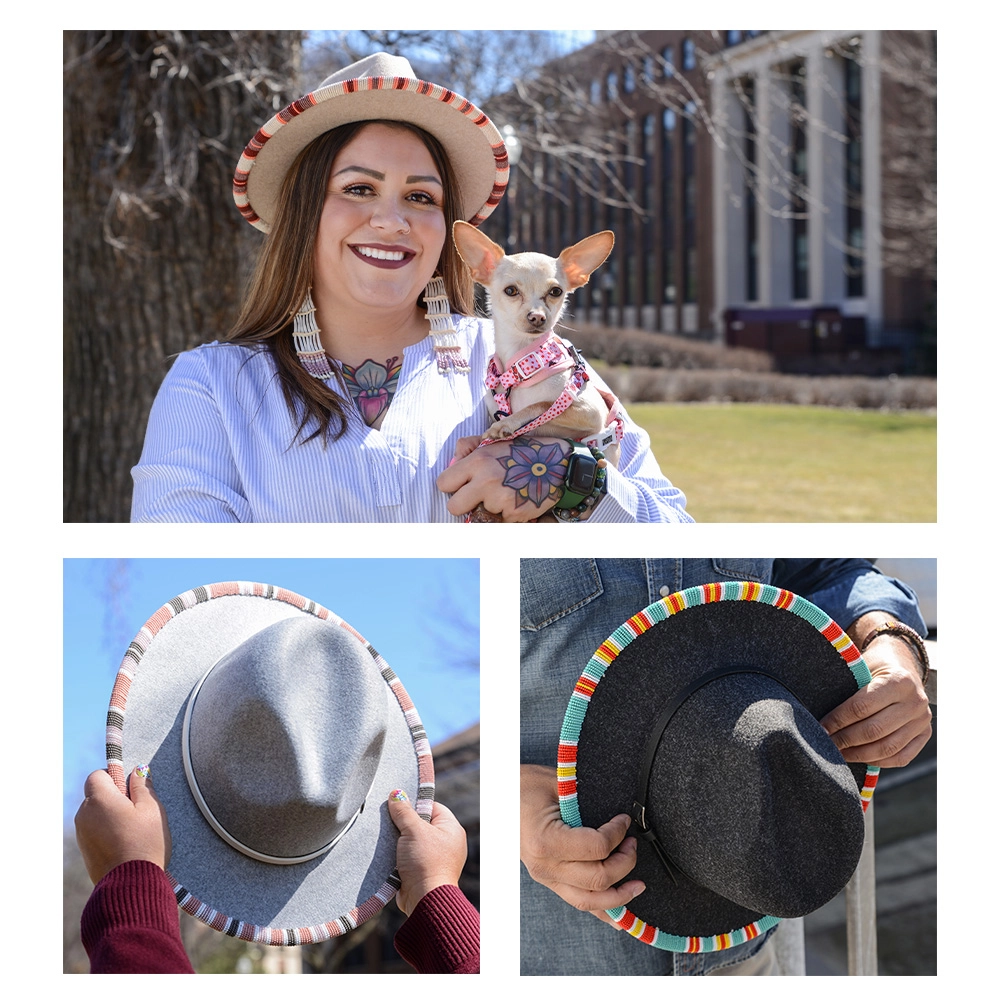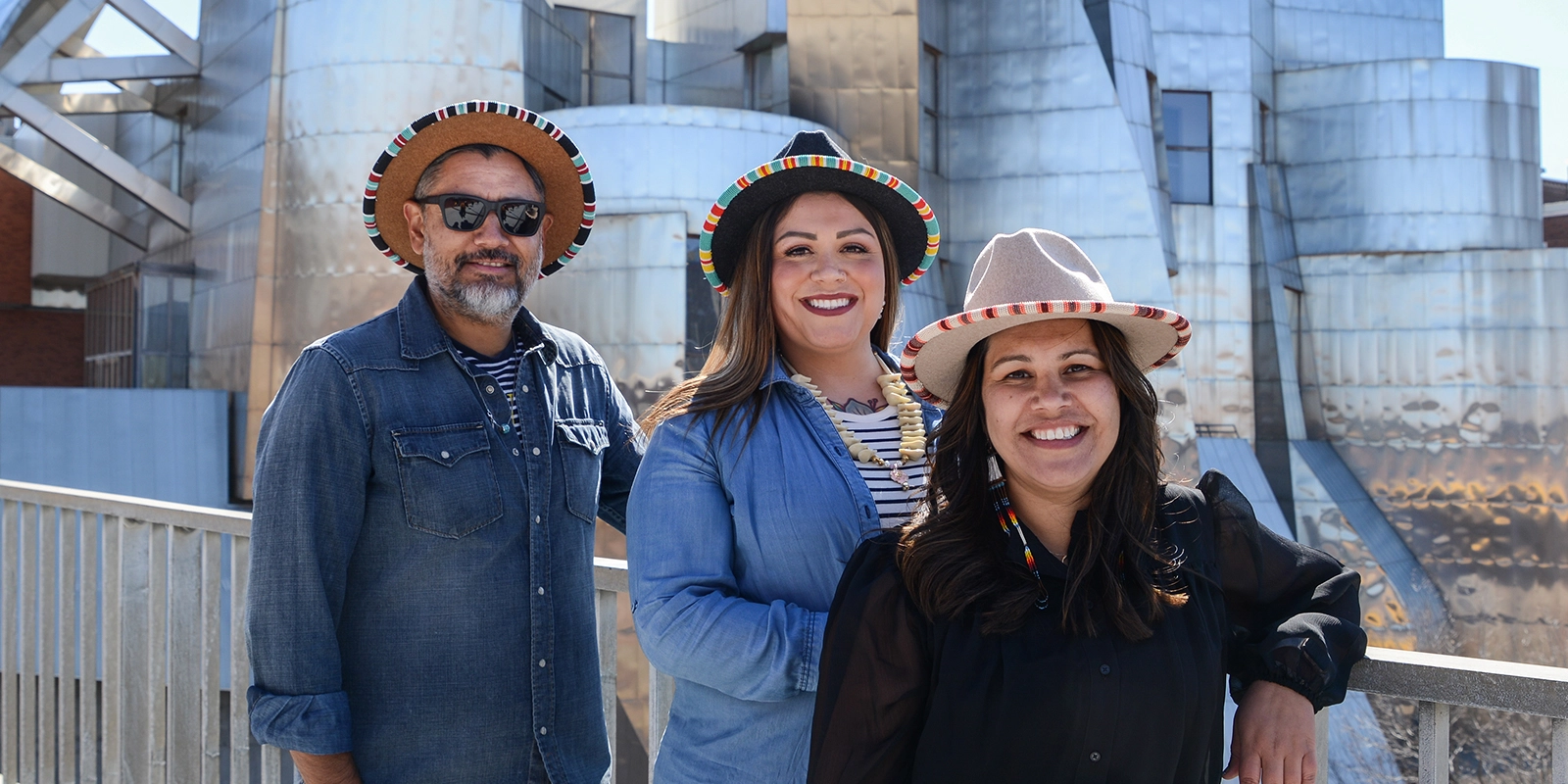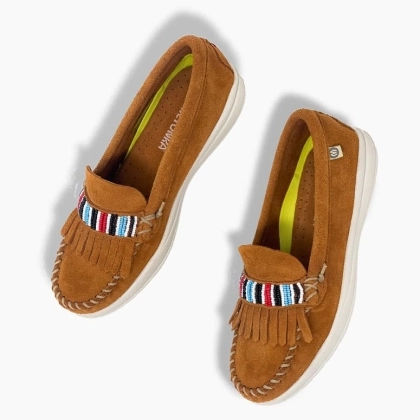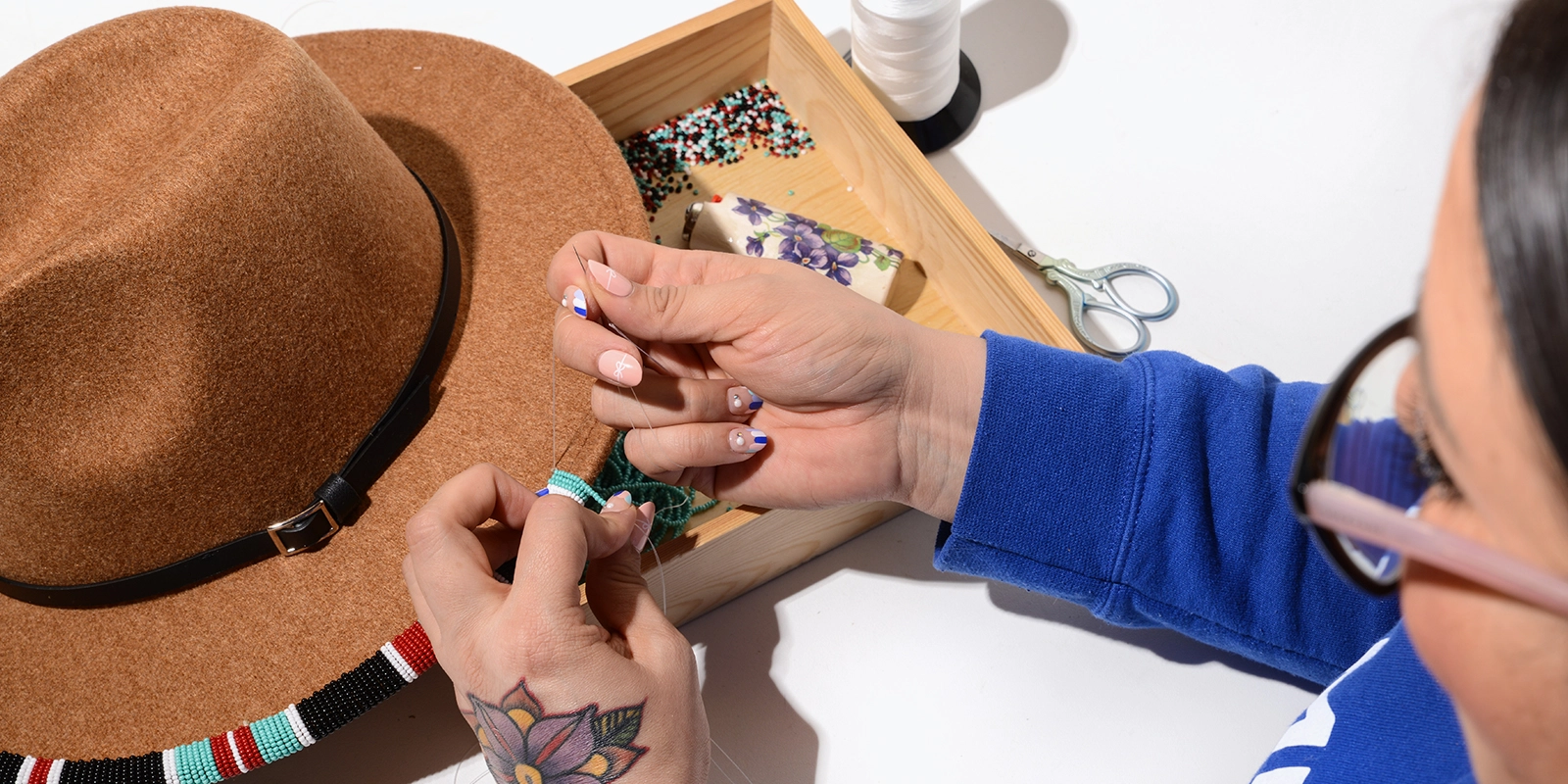

After a sold out debut in December 2021, Anishinaabe artist and Minnetonka’s Reconciliation Advisor, Adrienne Benjamin, has returned with an equally stunning limited edition collection of hand-beaded hats this spring. Four new designs – conceptualized and hand-beaded onto the hat’s brim by Adrienne herself – represent significant people, places and memories in her life as wearable art. In the interview below, we get a further glimpse into her creative process, the art of beading, and the inspiration and meaning behind the designs that she creates for all to enjoy.
What’s the significance of beading in Native American culture? Or more specifically, for the Anishinaabe?
Ever since seed beads and other decorative embellishments became available after encountering fur traders, the Anishinaabe people have used beadwork as an artform that documents their co-existence with the land, flora, and medicines. Beadwork became a means of financial support for those who created beautiful pieces that could be traded or sold to local stores. It also was a way to adorn warriors, elders, or other people of respected communal place. There were designs that were specific to families, clans, and even specific tribes which were recognizable to neighbors.
How did you choose the bead colors for this latest collection? What’s the inspiration behind each hat?
This collection is very special to me. I chose each colorway not only based on its aesthetic, but because they remind me of something significant in my current life or a memory.
The pink and gray colorway reminds me of frosty mornings harvesting maple sap. The steam of the boiling pot cooking down the watery sap and the quick first peek of the sun just coming up through the trees creating a candy pink glare against the grayish look of the snow.
The brown and tan colorway was inspired by maple sugar itself. I have so many great memories with loving elders in my community, sharing stories while cooking and collecting sap. Processing maple sugar the old way teaches patience and gratitude – and those teachings, aside from the sugary sweetness, are a gift in itself.
The black and turquoise colorway reminds me of the woodland regalia of a treasured elder from my childhood. He was known as Stiigwe, or Frank Skinaway, and he was my niiyawen’enh (similar to common knowledge godparent). I remember he would dance at every pow wow in our community, and he was one of the kindest and most encouraging faces that I remember in my community. When I looked at him, he made me feel proud to be Anishinaabe.
The turquoise and red colorway is an ode to the water of Mille Lacs Lake. The crisp blue of the rippling water with little specks of red and yellow reflecting in the sun. I am so proud that my people chose this beautiful lake to call home. They survived many removal attempts that occurred at the hands of local, state, and federal governments, and still thrive here today.
Walk us through it – what are the steps you go through in beading a hat?
Step one for me is bead color choice. The most fun that I have during this process comes in going to the bead store and matching up colors with ideas in my head. Once I have a solid color combination, step two is to match it up with the color and style of the many hats that I have in my art space, and from there, I start the beading process.
What keeps you inspired once you start the beading process? Are there certain things you think about, or is there a mood/environment you need to be in while you bead?
For me, beading is one of the best stress relievers. I really treasure it as my safe place and escape from anything else going on in my life. I really value the time that I give my art, whether it be beading, sewing, writing, or painting, as it allows me to really harness my creativity and lose myself for a while. Traditionally, elders would tell us that we should try to remain in a positive headspace and to think positive thoughts during our creative processes because so much of our time and energy goes into what we are making.


What’s the first hat you ever beaded? Who was it for?
The first hat that I ever beaded was one that was given to me by a friend as a nudge to try my hand at beading it. I actually created a ribbon shirt to match it, but I was so dissatisfied with my beadwork on the hat that I tucked it away in shame. My twelve-year-old daughter recently found it and said that she loved it, and wanted to keep it because it was special to her that it was my first one after how many I’ve done now. So as much as I didn’t love it, it became incredibly meaningful.
Do you have a favorite hat, design or color that you’ve beaded? Who was it for?
That’s a hard one. I love to play with subtlety in my art and allow color matches to really work their magic and keep things simple; there is a kind of burnt rose color hat that I made quite a while back that really embodies that, which is owned by a kwe (woman) in my community named Taria that is still my favorite to this day.
About how many beads do you use to create each hat? How many rows of beads make up each design?
So, I actually counted the number of lines on one side of the hat and took that number times two, and then took that number times the average number of beads I use per line – which turned out to be … 9,760 beads! So nearly 10,000! That even amazed me!
How would you style these hats? What is your favorite outfit and/or occasion to wear them?
I personally love to show out. Stepping out with beadwork of any kind always makes me feel proud of my heritage and extra beautiful. I also feel like wearing handmade work brings a different vibe to an outfit. You really can feel the work that artists put into their craft, and wearing something that you know was handmade makes it all the more special – and not to mention a great conversation piece.
I’ve also always been into hats of all sorts. Fall and winter are my favorite seasons because it’s officially constant hat time!
I’m not Native American. Is it appropriate for me to wear Native American designs?
When it comes to fashion, buying directly from an Indigenous designer is always best. You will be supporting their artistry, traditional knowledge, and even their community through that purchase. It also helps to learn about the tribe of the artist that you are purchasing from. If asked about the artistic fashion item while wearing it, you can then raise the bar of understanding and educate others about the history of those tribal people and even the lands on which the item may have been made.
There are many unique tribes within the stolen lands of the United States whose items and designs may hold many different meanings. Usually, an artist will not sell an item if there is sacred or religious meaning behind it – as those items should never be for sale as they usually are familial and tribal heirlooms meant to be passed down from generation to generation. These are also items that people from outside of these tribal communities should never possess unless they were gifted to that individual, which would be an extremely rare occurrence for a non-Native person.
From your perspective as an artist, is there anything else you’d like to share with us about this artform?
Aside from the hats that I create, I would invite people to explore the unique work of other Indigenous artists. There are some incredibly ornate and beautiful beadwork jewelry pieces out there! As a way to do your part to stop Native cultural appropriation, always try to buy directly from Native Artists and not just Native-themed and inspired designs.
To learn more about Minnetonka’s commitment to the Native American community, please visit this link.
To learn more about Adrienne Benjamin, please visit her website or our previous Q&A with Adrienne conducted in December 2021.


